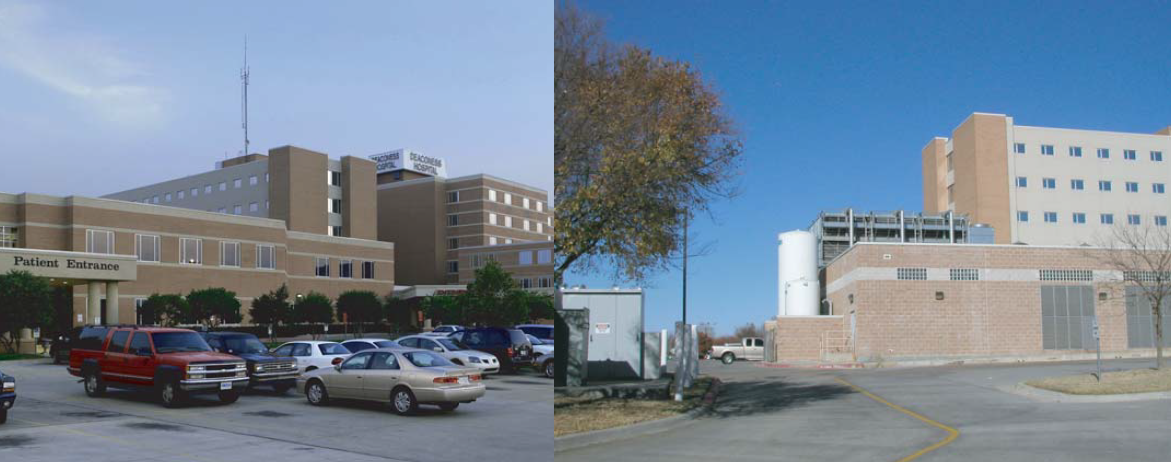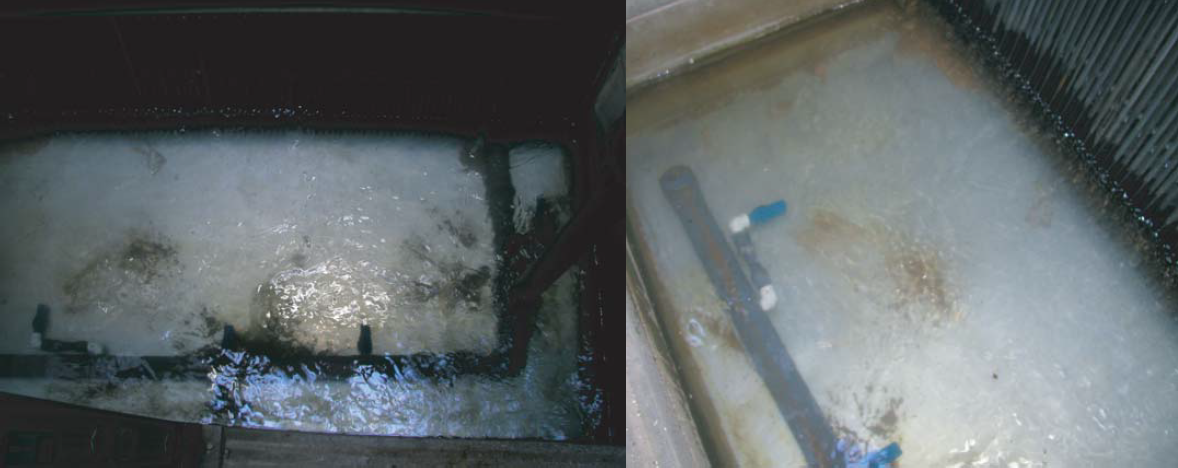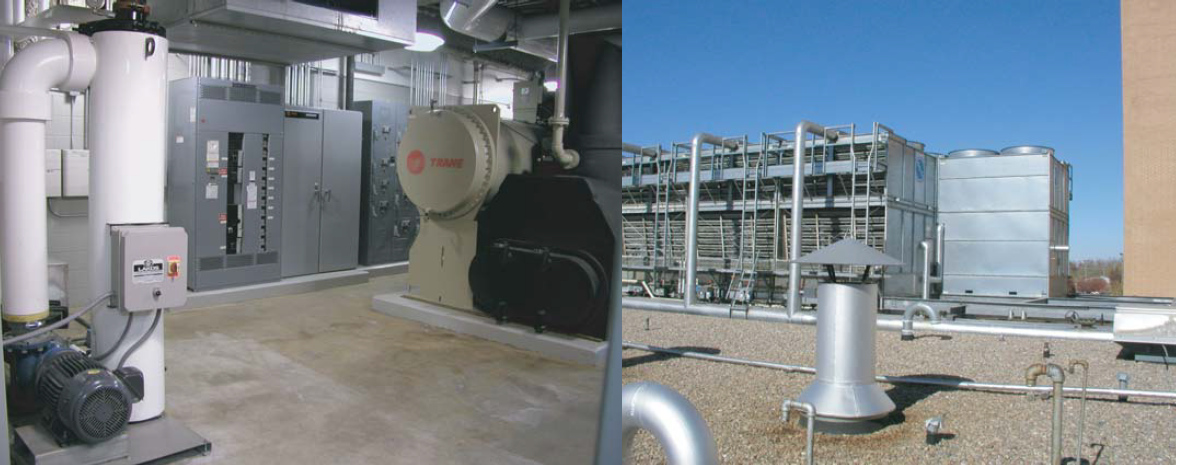Deaconess Hospital Discovers Cure for Chronically Dirty Cooling Towers

Hospital Discovers Cure for Chronically Dirty Cooling Towers
Application: Cooling Tower – Deaconess Hospital in Oklahoma City, OK
System Identification: 2400 ton chilled water system consisting of 5 chillers, a seven cell cooling tower @300 nominal tons each, and a plate and frame heat exchanger for ‘free-cooling’; LAKOS TCX-0825 TowerClean System and HydroBoosters
Solids/Liquid: Silt, rust, and biological growth in tower basins.
Problem/Challenge: Keeping cooling towers clean at minimal expense and with limited staff time. The maintenance staff at Deaconess Hospital in Oklahoma City, OK was devoting as much as 60 man-hours each year just cleaning the cold water basins of its 7-cell cooling tower. According to Ray Smith, Central Plant Manager, sometimes there would be a couple of inches of mud in the basins alone. It would take two men eight hours to shovel out and power wash a single cell. Each time the cleaning crew would have to wear face masks and protective clothing to prevent any exposure to Legionella.
Smith attributes part of the excessive debris to the location of the cooling towers, which are on the second level floor of the plant, and are fully exposed to dirt blowing from the north and south. Although the hospital had a side stream sand filter installed on the condenser water loop, it didn’t come close to providing the solids filtration that the system required. It also took up a lot of floor space and required a large volume of water and chemicals for routine cleaning. The cooling towers were hardly an isolated problem. The excessive debris in the system created other maintenance issues that drained the Deaconess maintenance staff of manpower hours.
These included:
- Weekly cleaning of the condenser water pump strainers. This consumed up to 2 hours per pump weekly.
- Seasonal cleaning of a plate & frame heat exchanger used for free cooling. This unit had to be completely disassembled and cleaned once or twice during the cooling season, requiring 10-20 hours of labor each time.
- Frequent cleaning on three chillers and two compressor chillers.
Solution: The representative in Oklahoma responsible for servicing the chillers at Deaconess hospital knew that there was constant, excessive fouling on the condenser water tubes, and as a result, spent more time than usual routing out the tubes. Realizing that the cooling towers were the primary source of debris in the system, a LAKOS TowerClean System was recommended.
“I visited Oklahoma State University (OSU) where a LAKOS basin cleaning system was installed and decided that if my towers were half as clean as those, I’d be happy,” said Mr. Smith. “It looked like pool water.”
Shortly after Smith’s visit to OSU, a LAKOS TowerClean system was installed in the chiller plant at Deaconess, one floor below the cooling towers. The unit incorporates a unique basin sweeping system that continuously cleans the cooling tower basin by pulling water from the cold water basin and pumping it through the LAKOS centrifugal action separator to remove the solids. This clean water is reintroduced to the cold water basin under pressure through piping manifolds with induction producing spray nozzles, called HydroBoosters. This induced spraying action pushes the dirt away across the tower basin floor and away from the cooling tower condenser water return and towards the LAKOS system filtration suction point. The separator regularly purges the concentration of collected solids at specified intervals with a discharge of the outlet flow into a purge metering box which helps balance the volume of purge fluids with the capacity of the floor drain to prevent flooding.
Results: The installation of the LAKOS unit has had a profound impact on the clarity of the cooling tower water. It has also drastically reduced the amount of labor required to keep the system running:
- Since the system was installed the hospital has not had to shut down the cooling towers even once for cold-water basin cleaning. An inspection of the system three years after the initial LAKOS installation revealed that the water remains clear, not murky.
- Condenser water pump strainers now require only a peak seasonal cleaning versus the previous bi-monthly schedule, amounting to a 10:1 reduction in labor.
- Plate & frame heat exchangers, which once required 20 to 30 hours of labor to clean annually, have not required any cleaning since the installation of the LAKOS unit. Cleaning these was once a major task. Remarkably, the original sand filter has now been taken offline and is currently being used as a mixing tank for chemicals. “The sand filters weren’t catching any of the sand or debris. We could tell immediately that the LAKOS unit was maintaining water quality 100% better than the sand filter,” said Smith, who estimates that they spend one-tenth of time draining the existing LAKOS system as they did the old sand filter.
Long Term Benefits: Although the hospital has not made definitive comparisons in terms of energy savings, or chemical treatment, the staff feels certain that there have been improvements. Trane technicians have logged closer temperature approaches, indicating that heat transfer has improved as a result of cleaner surface areas on the condenser water tubes. Cleaner water also means less downtime and a more effective water treatment program. Deaconess Hospital demonstrates what a cumulative impact a reliable separator system can have on a chilled water plant, and most importantly, it is a long term solution—not a band-aid.


